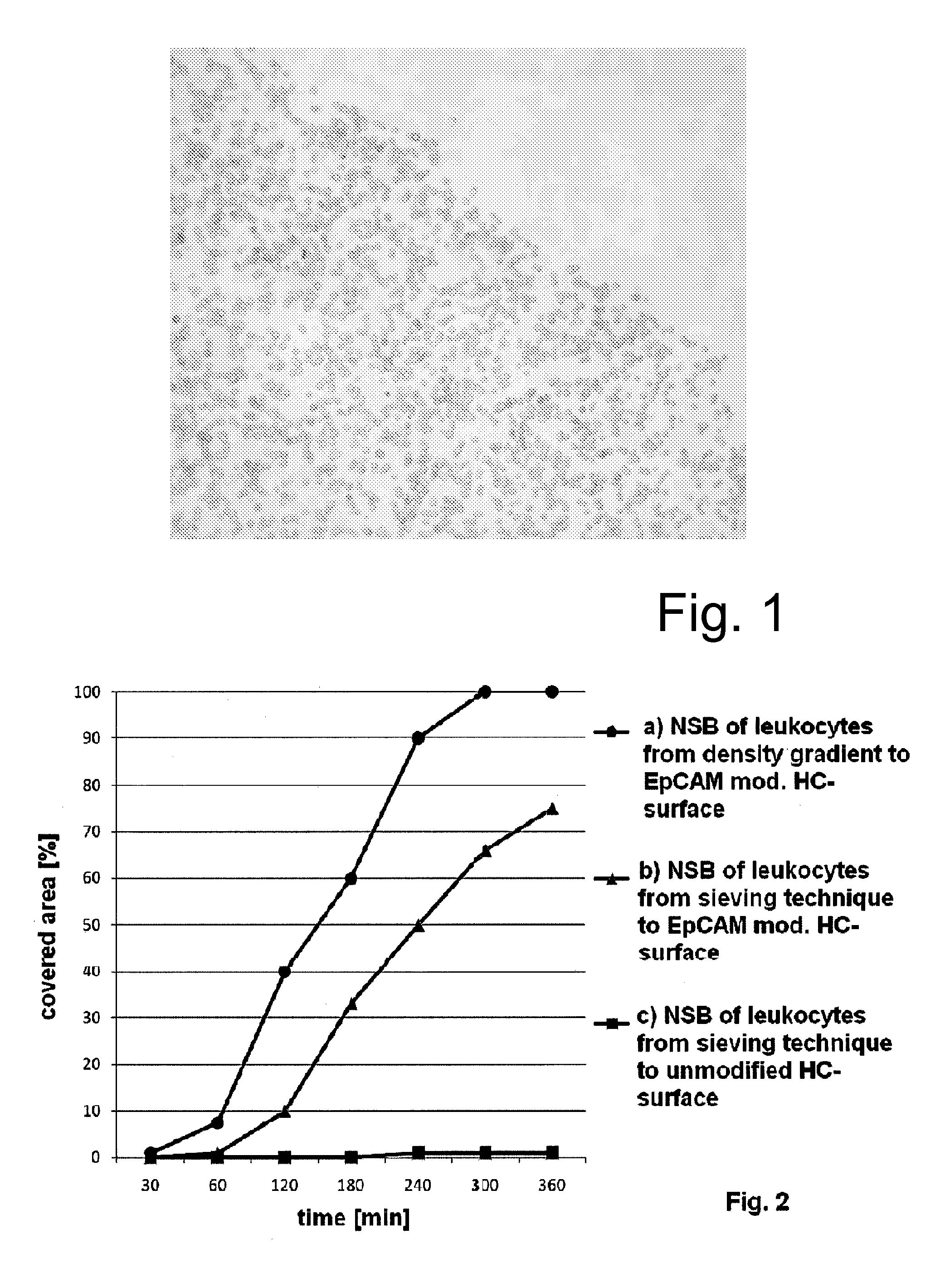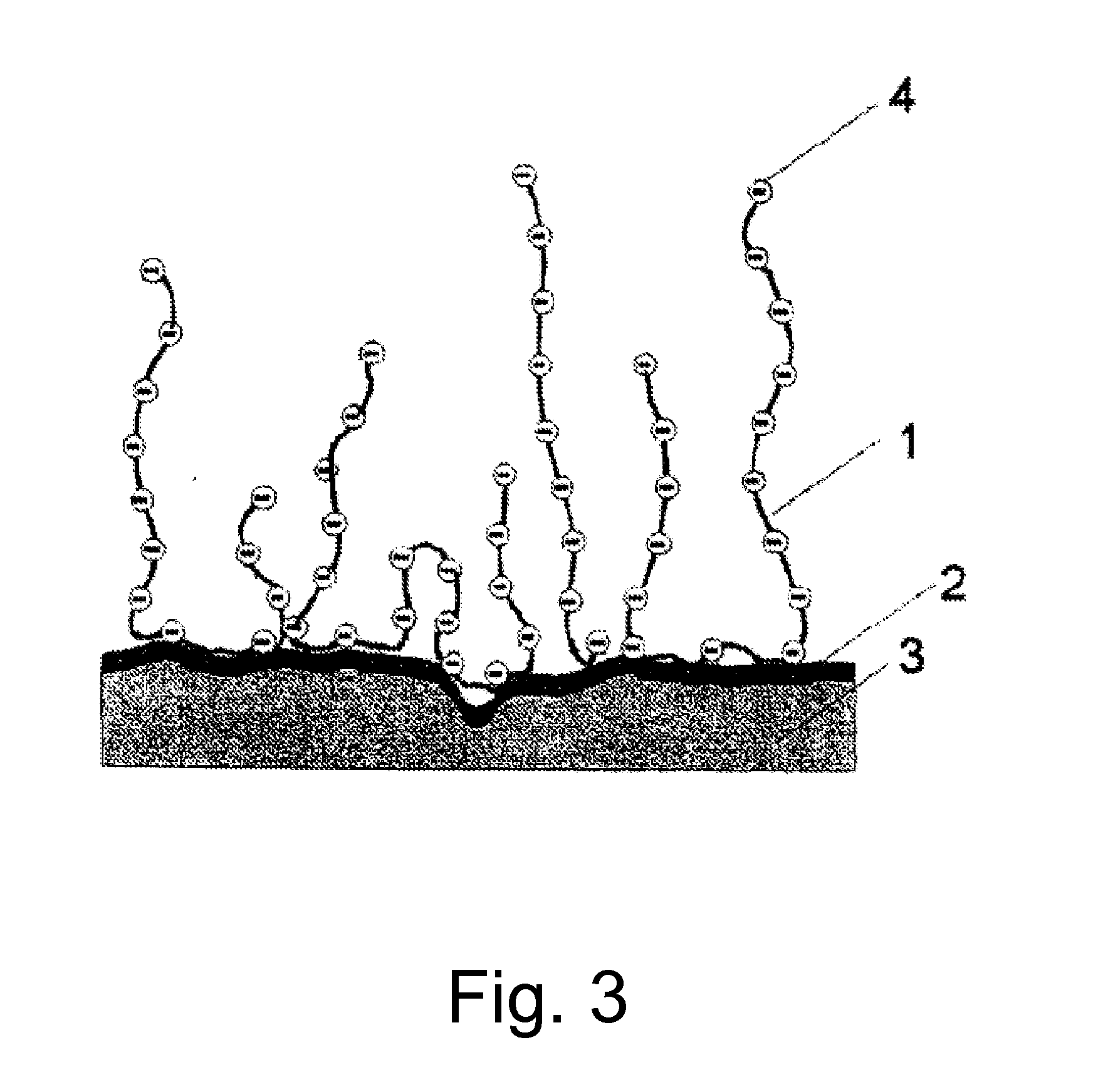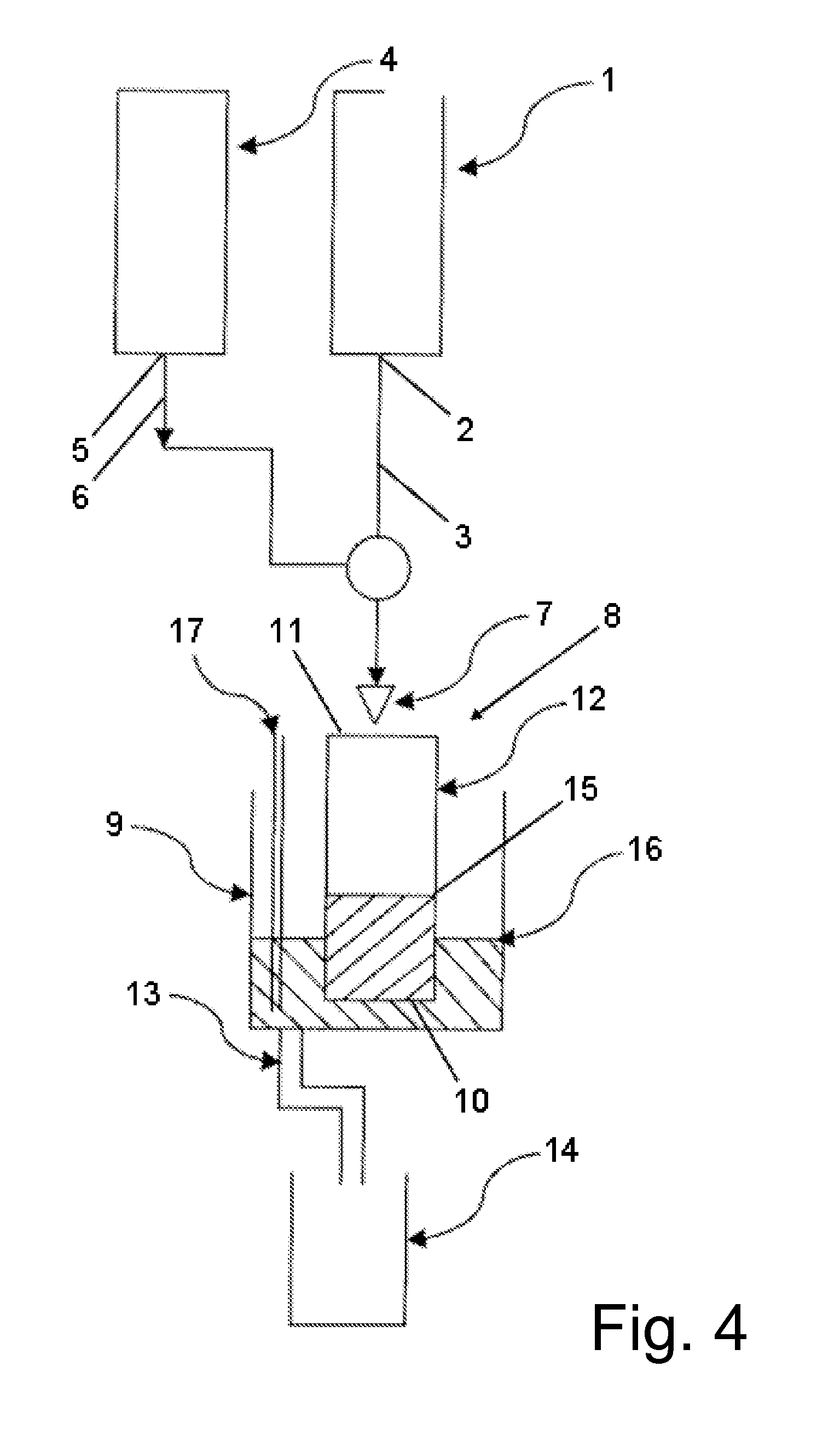Method for isolating target cells
- Summary
- Abstract
- Description
- Claims
- Application Information
AI Technical Summary
Benefits of technology
Problems solved by technology
Method used
Image
Examples
example 1
Preparation of a Test Sample Containing Tumor Cells
[0098]Cultured MDA-468 cells derived from human breast carcinoma were pre-stained with 4′,6-Diamidino-2-phenylindol (DAPI, Pierce / ThermoScientific) without permeabilization. DAPI is a cationic fluorescent dye which binds to adenine-thymine-rich DNA. DAPI is regularly used for staining cell nuclei. The stained cells can be counted by visual inspection or by suitable automated devices. The cells were washed twice with Dulbecco's modified Eagle Medium (DMEM) to remove excessive dye. Each suspension of pre-stained cells was controlled for fluorescence emission. Aliquots of tumor cells were counted manually and spiked in human whole blood samples collected from healthy donors by venipuncture in collection tubes with EDTA to prevent coagulation. The blood samples were used within 4 h from collection. For recovery testing, the tumor cells were diluted to cell numbers between 50 and 500 cells / 100 μl to minimize dilution and counting errors....
example 2
Preparation of a Woven Fabric for Cell Sieving
[0099]The filter of a blood administration set (Sarstedt AG & Co; 74.4255) was separated and the woven filter removed. A sheet of a woven fabric (Sefar AG, Sefar Nitex 03-5 / 1, Sefar Petex 07-5 / 1) having a mesh size of 1 μm was fixed on the filter rack by use of an adhesive. After fixing the woven fabric to the filter rack, any remaining solvent deriving from the adhesive was removed in a vacuum for 30 min. A leak test was carried out with a cell suspension of monocytes from buffy coat obtained by centrifugation of 500 ml blood over the whole volume of the filter rack. The so prepared filter rack was fixed in the middle of a beaker by using a double-faced medical adhesive (50 μm thick) so that the closed bottom of the filter rack was in contact with the bottom of the beaker.
example 3
Removal of Red Blood Cells and Platelets from the Sample
[0100]A pre-wetting of the filter rack prepared in example 2 is preferred to prevent initial unspecific adhesion of cells to the filter unit. Hence, a volume of 10-15 ml of a physiological and iso-osmolaric buffer (e.g. PBS) was added to the filter rack. The filtering was performed in an assembly as depicted in FIG. 4. The buffer was applied to the center of the cylindrical filter rack by a conduit which is located 1-2 cm above the opening of the filter rack. A flow rate of 1 ml / min was set with a peristaltic pump. A blood sample as prepared in example 1 (stored for 24 h under agitation at room temperature) containing between 10 and 120 MDA-468 cells per ml in spike-in experiments was applied to the filter rack by a second conduit with a flow rate of 100-200 μl / min. In this way, dilutions of the blood samples of in a ratio of about 1:5 to 1:10 could be obtained.
[0101]Due to the narrow mesh size of the woven filter element, the ...
PUM
| Property | Measurement | Unit |
|---|---|---|
| Length | aaaaa | aaaaa |
| Length | aaaaa | aaaaa |
| Pore size | aaaaa | aaaaa |
Abstract
Description
Claims
Application Information
 Login to View More
Login to View More - R&D
- Intellectual Property
- Life Sciences
- Materials
- Tech Scout
- Unparalleled Data Quality
- Higher Quality Content
- 60% Fewer Hallucinations
Browse by: Latest US Patents, China's latest patents, Technical Efficacy Thesaurus, Application Domain, Technology Topic, Popular Technical Reports.
© 2025 PatSnap. All rights reserved.Legal|Privacy policy|Modern Slavery Act Transparency Statement|Sitemap|About US| Contact US: help@patsnap.com



